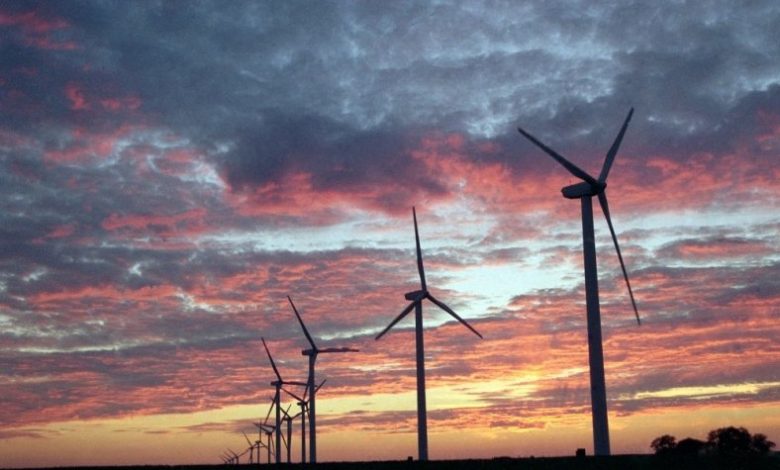 Dr. Seema Javed
Dr. Seema Javed
The rapidly falling costs of wind and solar mean that carbon capture and storage (CCS) is not a cost-effective way decarbonising the power sector. Our Paris-compatible pathways show at best a marginal role for fossil CCS, which makes up only 0.1% of global electricity generationin 2030.
A new analysis which applies sustainability limits and minimises the need for carbon dioxide removal (CDR) finds new wind and solar needs to be installed five times faster by 2030 at a rate of 1.5 TW a year to limit global warming to 1.5°C. Global wind and solar capacity needs to increase to around 10 TW by the end of this decade, up from 2 TW in 2022. This is achievable if the recent acceleration in capacity additions is maintained.
The first Global Stock take (GST) under the Paris Agreement will culminate at COP28 in Dubai. The GST assesses where the world is heading based on current climate action, as well as what’s needed to achieve the Paris Agreement’s long-term goals. It is clear that the necessary transitions are not happening fast enough.
Under current climate policies, global temperatures are expected to increase 2.7°C by 2100 – and keep rising. Even the most optimistic assessments of national targets, which assume rapid emissions cuts after 2030 to make up for delays this decade, would push past the Paris Agreement’s limit, climbing to 1.8°C of dangerous warming by 2100.
“Everyone from the EU to the COP Presidency is calling for a global renewables target, but this must be based on the safest route to net zero. We’ve shown that if the world accelerates new wind and solar fivefold to at least 1.5 TW a year by 2030 while cutting fossil use by 40%, we won’t have to rely on potentially unsustainable amounts of carbon dioxide removal in the future,” says Claire Fyson, Head of Policy at Climate Analytics.

Our five key global 2030 targets aligned with 1.5°C are
1. Install at least 1.5 TW of new wind and solar capacity per year by 2030 – that’s a five-fold increase from 2022 levels of 0.3 TW. Total wind and solar capacity should reach around 10 TW by the end of the decade, five times the 2 TW of capacity in 2022.
This target is achievable if the recent acceleration in capacity additions is maintained. It should be seen as a floor – if electricity demand grows as quickly as in the IEA’s Net Zero Emissions scenario, then solar and wind installations would need to be closer to 2 TW/yr by 2030.
2. Set a global renewables target of at least 70% of electricity generation by 2030,
more than doubling today’s share of around 30%.
3. Cut global fossil fuel production by 6% each year from 2022 onwards to reduce fossil fuel use by around 40% over the decade.
4. Cut global GHG emissions in half (by 48%) by 2030 compared to 2019. This is faster than the 43% reduction highlighted by the IPCC and is necessary to significantly reduce dependence on carbon dioxide removal. This means reducing emissions by 8% per year (2021-2030).
5. Cut methane emissions in the energy sector by 66% by 2030.
These collective global goals are designed to mobilise action towards a safer, more liveable world. The rapid changes identified here are achievable, and with global emissions as high as ever, the need to revisit and update 2030 ambition in NDCs remains a crucial task ahead of COP28.
The study distils key milestones the international community needs to meet by2030 to keep warming below 1.5°C, including rapidly scaling up renewables this decade to 70% of the global power mix, cutting greenhouse gas emissions by 8% a year to halve global emissions by 2030, and a 34% cut to global methane emissions over this critical decade for climate action.
Methane emissions in the energy sector would need to fall even faster, by 66%. “Our method takes only the latest global pathways with the most up-to-date information on technologies and costs. We know wind and solar can scale quickly and undercut fossil fuels on price. Our analysis shows they can do much of the heavy lifting so urgently needed this decade, so let’s fast-track their rollout,” says Dr Neil Grant, Energy and Climate Analyst at Climate Analytics.
Not all pathways in the IPCC AR6 database are fully compatible with the Paris Agreement. The study’s method focuses on the latest 1.5-aligned pathways that integrate sustainability constraints, filtering out older analyses and those that rely too heavily on risky assumptions. As a result, the study finds just 0.1% of global power would come from CCS by 2030.
 Jubilee Post News & Views
Jubilee Post News & Views





